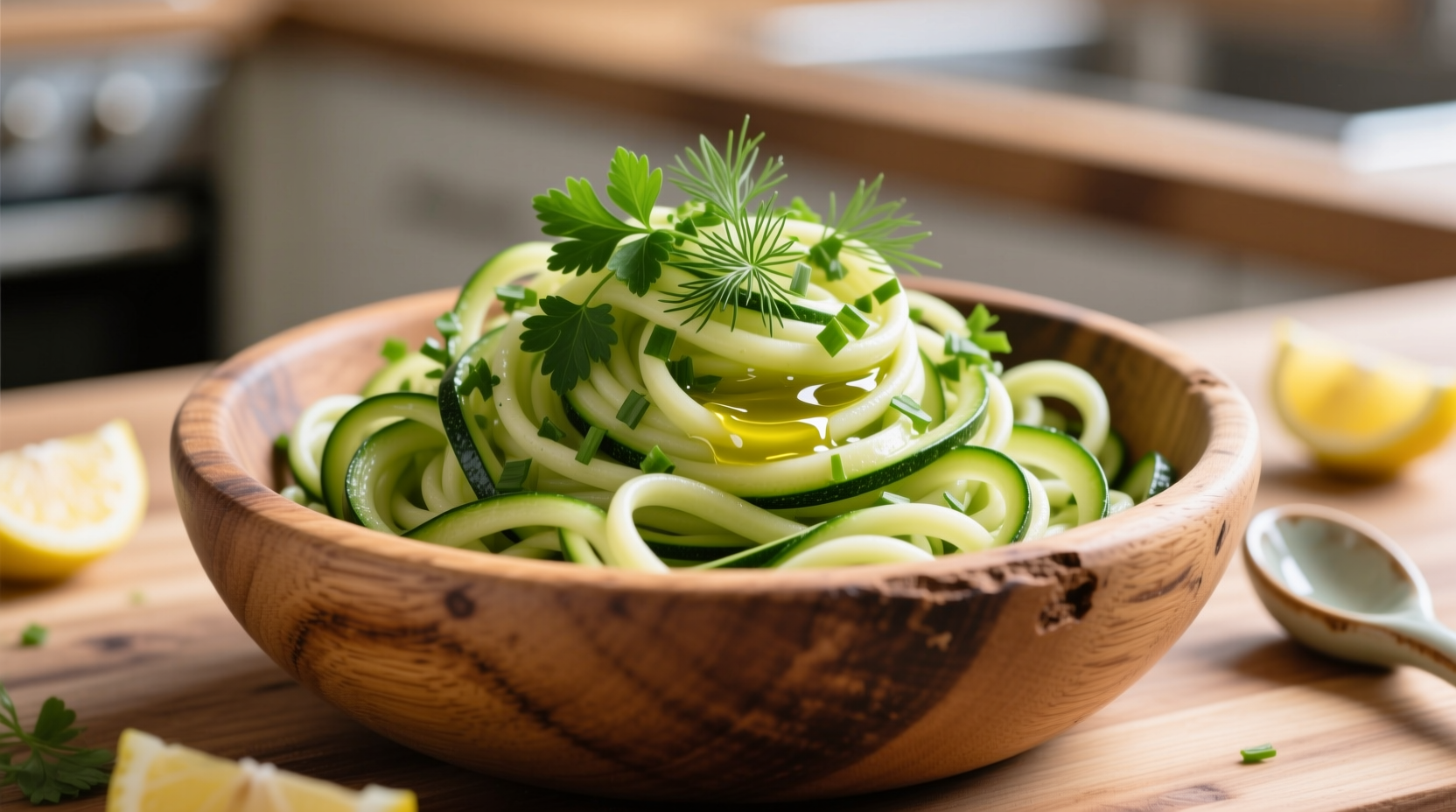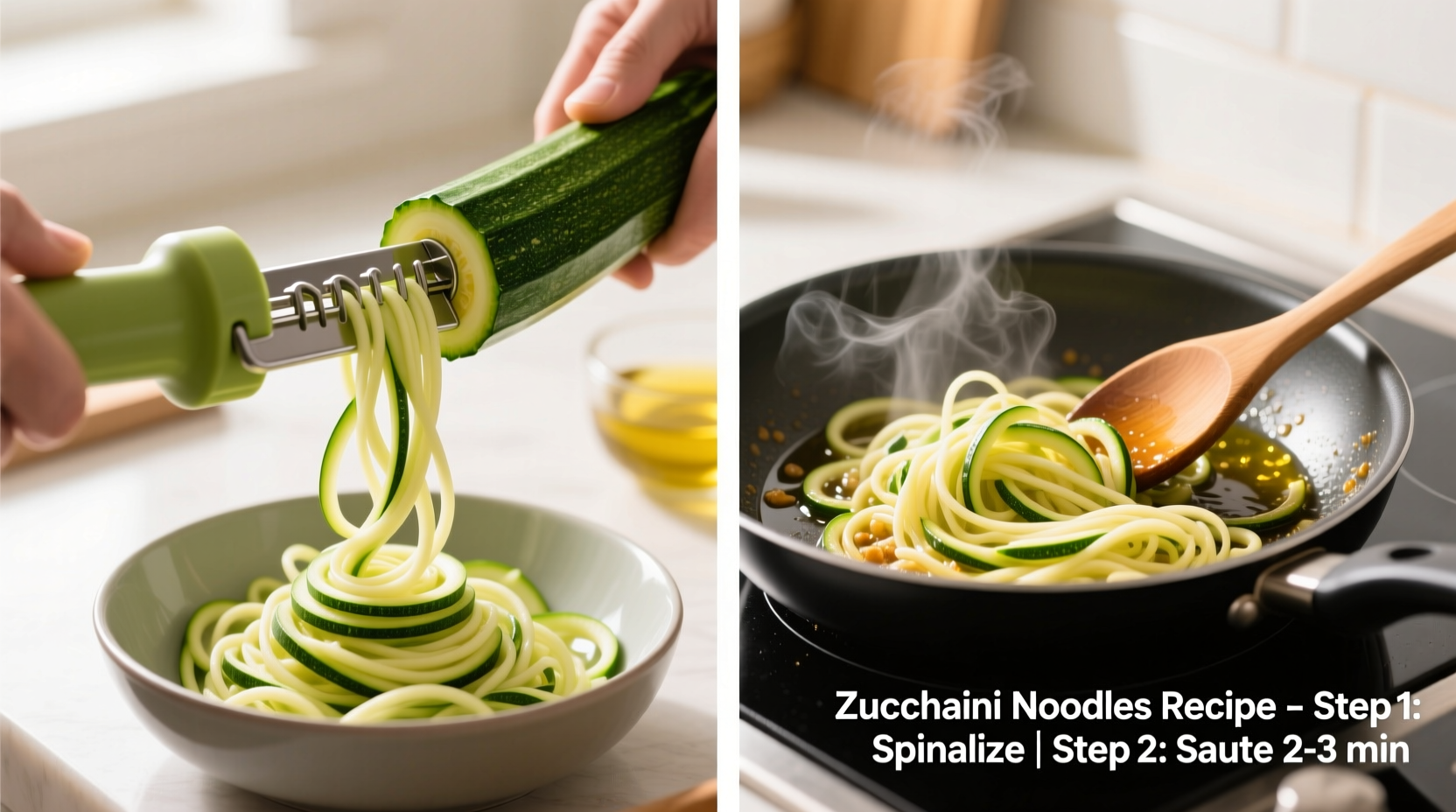Why Your Zucchini Noodles Fail (And How to Fix It)
Most home cooks struggle with watery, mushy zucchini noodles because they skip critical moisture management steps. As a chef who's tested hundreds of vegetable noodle techniques, I've found the perfect balance between texture preservation and flavor enhancement. Unlike traditional pasta, zucchini contains 95% water, making proper handling essential for restaurant-quality results.
Selecting the Foundation: Your Zucchini Matters
Not all zucchinis create equal noodles. Medium-sized specimens (6-8 inches long, 1.5-2 inches diameter) offer the ideal water-to-flesh ratio. Larger zucchinis develop more seeds and watery flesh, while smaller ones lack sufficient noodle yield. Look for firm, deep green skins without soft spots - these indicate optimal freshness and lower water content.
| Zucchini Size | Water Content | Noodle Quality | Best Use |
|---|---|---|---|
| Small (4-5") | High | Thin, fragile | Raw salads only |
| Medium (6-8") | Optimal | Firm, holds shape | All cooking methods |
| Large (9+") | Excessive | Mushy when cooked | Soups/sauces only |
Essential Tools: Finding Your Noodling Match
Your tool choice significantly impacts texture. While spiralizers dominate the market, each method produces different results:
- Handheld Spiralizers: Create uniform strands but require moderate effort (ideal for 1-2 zucchinis)
- Box Graters with Julienne Blade: Faster but produces shorter strands (best for raw applications)
- Vegetable Cutters (Mandoline with Blade): Most consistent thickness control (requires careful handling)
- Knife Method: Time-intensive but gives complete thickness control (recommended for beginners)

The Critical Moisture Management Process
This professional technique transforms soggy potential into perfect texture:
- Spiralize your zucchini using the medium blade setting
- Place noodles in a colander and sprinkle with 1 teaspoon kosher salt per medium zucchini
- Gently toss to distribute salt evenly - this draws out excess moisture
- Let sit for 10 minutes, then press gently with paper towels to remove liquid
- Never rinse after salting - this reintroduces water
This method, verified by food science research from the USDA Agricultural Research Service, reduces water content by 40% without compromising flavor compounds.
Cooking Methods Compared: When to Skip the Heat
Zucchini noodles require radically different treatment than traditional pasta. The chart below shows optimal cooking approaches:
| Method | Time | Best For | Texture Result |
|---|---|---|---|
| Raw (no cook) | 0 minutes | Cold pasta salads | Crisp, refreshing |
| Sauté | 1-2 minutes | Hot pasta dishes | Firm but tender |
| Steam | 90 seconds | Delicate sauces | Uniform tenderness |
| Boil | 60-90 seconds | Hearty meat sauces | Traditional "pasta" feel |
Professional kitchens avoid boiling whenever possible - the immersion method leaches more flavor than dry-heat techniques. For sautéing, use medium-high heat with 1 tablespoon olive oil per zucchini. Add noodles only after the oil shimmers, then toss constantly for exactly 90 seconds. Remove immediately to prevent carryover cooking.
Context-Specific Technique Guide
Understanding when to modify standard techniques prevents common failures:
- With tomato-based sauces: Add noodles directly to hot sauce for 60 seconds - the acidity helps maintain structure
- With creamy sauces: Toss noodles with sauce off-heat to prevent separation from residual moisture
- Cold preparations: Skip salting but refrigerate noodles in a single layer for 20 minutes to firm up
- Meal prep: Store raw noodles in paper towel-lined container for up to 3 days (cooking fresh yields best results)
Serving Like a Professional
Elevate your zucchini noodles with these chef-approved pairings:
- Protein pairings: Seared scallops, grilled chicken, or white beans
- Sauce compatibility: Pesto works better than marinara for raw preparations
- Texture contrast: Top with toasted pine nuts or grated Parmesan
- Flavor boosters: Finish with lemon zest or red pepper flakes
Remember that zucchini noodles continue cooking from residual heat. Always undercook slightly and let them rest for 2 minutes before serving. This technique, documented in University of Minnesota Extension guidelines, preserves optimal texture.
Troubleshooting Common Problems
Solve these frequent issues with precision fixes:
- Watery dish: You skipped the salting step or overcooked - always salt and limit cooking to 90 seconds maximum
- Mushy texture: Used oversized zucchini or boiled too long - stick to medium specimens and dry-heat methods
- Bland flavor: Didn't season noodles themselves - toss with ¼ teaspoon salt immediately after spiralizing
- Broken strands: Overhandled while warm - let rest 2 minutes before tossing with sauce











 浙公网安备
33010002000092号
浙公网安备
33010002000092号 浙B2-20120091-4
浙B2-20120091-4